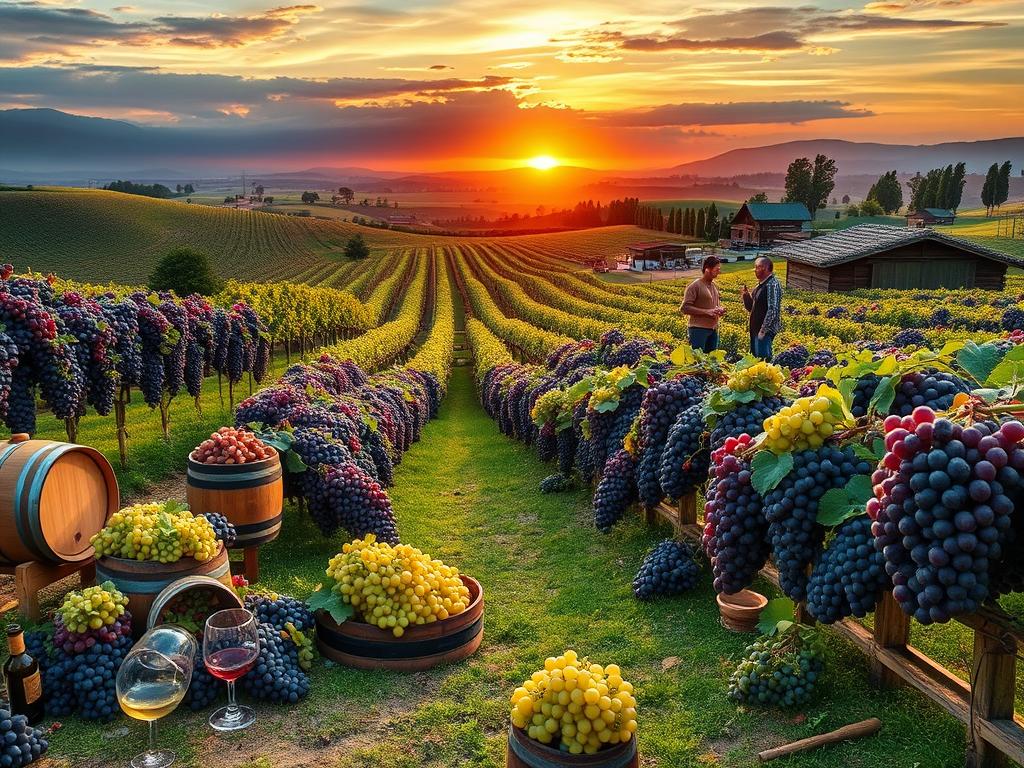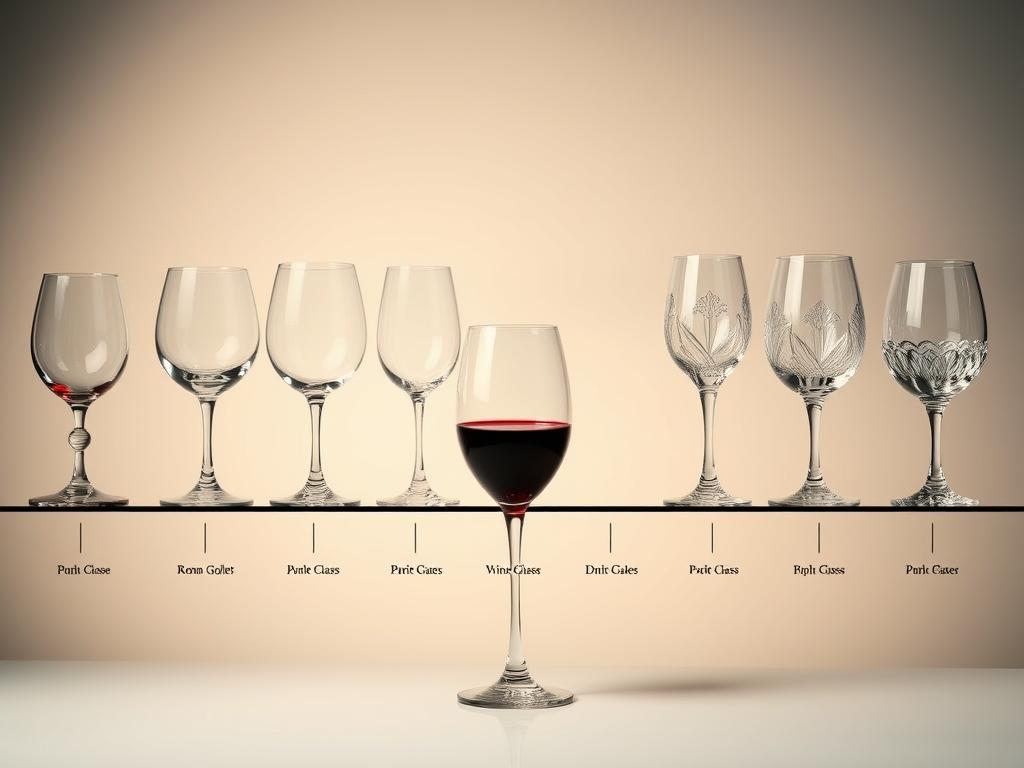The Influence of the Moon on Wine Production
For centuries, humanity has looked to the moon as a guiding force, its cycles intricately woven into the fabric of timekeeping, agriculture, and cultural beliefs. In winemaking, the moon’s influence has long fascinated vintners who believe its gravitational pull and phases affect various stages of grape growth and wine production. Biodynamic agriculture, a method that emphasizes the relationship between soil, plants, and cosmic cycles, has incorporated the moon as an essential component, especially in winemaking, where quality depends on timing, environment, and natural harmony.
Today, biodynamic winemakers and enthusiasts alike claim that observing the moon’s cycles can enhance grape quality, improve fermentation, and even influence the taste and clarity of wine. This article explores how the moon’s phases are thought to impact winemaking, from planting vines to harvesting grapes, and delves into both the historical roots and the modern practices of lunar-based wine production. We’ll also examine scientific perspectives to better understand whether these lunar effects are grounded in nature or are simply fascinating folklore.

Lunar Cycles Explained: Understanding the Phases of the Moon
To grasp the influence of the moon on winemaking, it’s essential to understand its phases: new moon, waxing crescent, full moon, and waning crescent. Each phase lasts about a week, completing the cycle in roughly 29.5 days. The gravitational pull of the moon, which affects ocean tides, is also believed to influence the moisture levels in soil and plants. In biodynamic agriculture, it’s thought that certain lunar phases encourage specific agricultural activities that may affect plant growth and yield quality.
During the new moon, when the moon is not visible, some believe that energy is concentrated below ground, making it an ideal time for planting, as roots are thought to be established more effectively. The waxing moon, on the other hand, is associated with increasing energy, believed to boost plant vitality above ground, supporting vine growth. At the full moon, energy is said to peak, enhancing the absorption of nutrients, while the waning moon is often seen as a period of rest, encouraging maintenance tasks like pruning.
Historical Perspectives: The Moon’s Role in Traditional Agriculture
The moon’s influence on agriculture is an ancient idea, one that can be traced back to early civilizations such as the Egyptians, Greeks, and Romans. Farmers in these societies often used lunar calendars to guide planting and harvesting, believing that aligning activities with the lunar cycle resulted in healthier crops. The Egyptians even dedicated rituals to lunar deities, seeking blessings for abundant harvests. In Greece and Rome, lunar festivals celebrated agricultural bounty, reinforcing the belief that the moon’s cycles were inextricably linked to the success of the harvest.
In the Middle Ages, European farmers continued to rely on lunar calendars, using the phases to guide the timing of planting and harvesting. This tradition persisted through the centuries, with many cultures passing down these lunar agricultural practices. The influence of the moon on agriculture gradually became formalized in what we now know as biodynamic farming, a philosophy that deeply respects the interdependence between the earth and celestial cycles.
Biodynamic Winemaking: The Influence of Rudolf Steiner’s Philosophy
Biodynamic agriculture owes much to the teachings of Rudolf Steiner, an Austrian philosopher and agricultural reformer who introduced this approach in the 1920s. Steiner emphasized working with the natural rhythms of the cosmos, particularly the moon, to nurture plants and animals in harmony with their environment. In his lectures, Steiner suggested that the moon’s cycles influenced soil vitality, plant growth, and, consequently, the quality of the crops produced.
In the context of winemaking, biodynamic principles are followed meticulously by certain vintners who believe that adhering to lunar cycles enhances the quality and character of their wines. Tasks such as planting, pruning, and harvesting are synchronized with the moon’s phases, as are cellar operations like racking (transferring wine from one container to another to clarify it) and bottling. Biodynamic winemakers believe that when these practices are done in alignment with lunar rhythms, the wine develops a more vibrant taste and a stronger connection to the terroir.
Planting and Growing Vines According to Lunar Phases
The planting phase is one of the most crucial periods in a vine’s life cycle, setting the stage for its growth and eventual fruit quality. Biodynamic farmers often plant new vines during specific lunar phases, believing that this timing enhances root establishment and overall plant health. In particular, they may plant during the new moon or waxing phases, when the energy is said to move upward, fostering strong vine growth.
The waxing phase, as the moon moves from new to full, is thought to be ideal for activities that promote growth above ground. Farmers who follow lunar practices believe that sap flow is higher during this phase, which supports leaf development, making it a good time to fertilize or water the vines. During the waning moon, pruning is common, as the decreased energy flow is believed to help plants heal from cuts, reducing the risk of disease.
Harvesting and the Moon: Choosing the Right Time for Optimal Quality
The timing of the grape harvest is one of the most critical decisions in winemaking, affecting the balance of sugars, acids, and flavors. In biodynamic winemaking, many vintners choose to harvest grapes based on lunar cycles, believing that harvesting during specific phases enhances the grapes’ natural properties. For instance, the full moon is thought to yield the best harvests, as the increased lunar energy is said to heighten sugar content and overall grape quality.
Some winemakers believe that harvesting during the full moon improves grape flavor, while others prefer the new moon, viewing it as a time of rest when grapes are more concentrated in flavor. Biodynamic vintners argue that following these lunar cues results in wines with more intense flavors, reflecting a greater sense of place. For those committed to biodynamic principles, these practices align not only with lunar cycles but with the rhythms of nature itself, yielding wines that they believe are healthier, tastier, and more vibrant.
The Moon and Fermentation: The Impact on Wine Aging and Taste
Fermentation is a delicate process in winemaking, transforming grape juice into wine through the action of yeast. Some biodynamic winemakers believe that the moon’s phases can influence fermentation, affecting the wine’s flavor and texture. During the waxing and full moon phases, they may allow wines to ferment more actively, while during the waning moon, they focus on stabilizing the wine and allowing flavors to develop.
In biodynamic practices, the timing of racking and bottling is often aligned with the moon’s phases. Some winemakers believe that racking during the waning moon, when gravitational forces are lower, helps clarify the wine by allowing sediment to settle more efficiently. Bottling may also be done during certain phases, with some vintners claiming that wine bottled on a waxing or full moon retains better clarity and flavor. These practices reflect the belief that the moon’s influence continues beyond the vineyard and into the cellar, shaping the wine’s final character.
Scientific Studies on Lunar Influence: Separating Fact from Folklore
The scientific community has shown mixed responses to the idea that the moon influences agriculture, and studies specifically addressing its impact on wine production are limited. While it is established that the moon’s gravitational pull affects ocean tides, there is less evidence that this pull significantly influences plant growth or fermentation. Some researchers argue that changes in sap flow related to lunar cycles are minimal and that the perceived effects may be more psychological than physiological.
However, certain studies suggest that lunar cycles may have subtle effects on seed germination and soil moisture, though these findings are not universally accepted. While biodynamic practitioners assert that lunar-based timing enhances grape and wine quality, many scientists remain skeptical. For now, the influence of the moon on wine production remains a subject of debate, blending folklore with tradition in ways that appeal to both believers and skeptics.
Winemakers’ Perspectives: Interviews and Insights from Practitioners
Many biodynamic winemakers express strong convictions about the benefits of following lunar cycles. They report noticing differences in grape growth, fermentation, and wine flavor when tasks are aligned with the lunar calendar. For some, these observations are based on generations of family tradition, while others adopt lunar practices as part of a commitment to sustainable and holistic agriculture.
Winemakers who follow biodynamic methods often cite a stronger connection to their land and vineyards. They argue that the practices required by biodynamics, including lunar observations, create wines with a distinctive character. To these vintners, the moon’s influence is as much about fostering a mindful approach to winemaking as it is about the tangible effects on the wine itself.
The Role of the Moon in Wine Tasting and Market Perception
The concept of lunar-influenced wine has resonated with wine enthusiasts, sommeliers, and retailers. Some sommeliers recommend tasting wines on specific lunar days, such as “fruit days” or “flower days” on the biodynamic calendar, which are believed to enhance flavors and aromas. As a result, some wine shops and restaurants now offer “biodynamic tasting experiences,” allowing consumers to explore the alleged effects of lunar cycles on wine flavor.
For biodynamic winemakers, this market interest offers a way to differentiate their products. Wines labeled as biodynamic often carry a sense of exclusivity and alignment with natural cycles, which appeals to consumers interested in sustainability and traditional farming practices. Whether or not the moon’s influence is scientifically validated, its role in shaping wine perception continues to grow.
Challenges and Criticisms of Lunar-Based Winemaking
While biodynamic winemaking has passionate advocates, it also faces criticism. Many in the scientific community dismiss lunar influence on wine production as pseudoscience, arguing that its effects are anecdotal rather than evidence-based. Skeptics contend that the complexities of winemaking cannot be controlled by lunar cycles alone, pointing out that other environmental factors, such as climate and soil quality, have a far more significant impact on wine.
Adhering to biodynamic principles also requires careful planning and sometimes restrictive timing, which can be challenging for large-scale operations. Some winemakers struggle with the practicalities of biodynamic practices, especially during unpredictable weather when harvests must be done quickly. Despite these challenges, biodynamic wine has carved out a niche in the market, and its lunar practices continue to attract interest.
Future of Lunar and Biodynamic Practices in Winemaking
The demand for biodynamic wines has surged in recent years, driven by consumer interest in sustainable, “natural” wines. As more winemakers experiment with biodynamic methods, lunar-based practices may become increasingly mainstream. While some view biodynamics as a return to ancient agricultural wisdom, others see it as a marketing tool that adds mystique to the wine.
Research on lunar influence in agriculture continues, albeit slowly, and future studies may provide clearer insights into the moon’s impact on plant growth and fermentation. In the meantime, biodynamic winemakers remain dedicated to their craft, blending tradition with innovation as they seek to deepen their connection to the rhythms of nature.
Embracing the Mystery of the Moon in Winemaking
Whether a scientifically validated practice or a cherished tradition, the influence of the moon on winemaking remains a captivating concept. For biodynamic winemakers, the moon offers a natural rhythm that guides their work, encouraging them to align their efforts with the broader cycles of nature. This approach fosters a deep sense of respect for the vineyard, producing wines that are as much a product of the cosmos as they are of the earth.
For many wine enthusiasts, the appeal of lunar-influenced wines lies in their mystique and connection to ancient traditions. Whether the effects are measurable or not, the role of the moon in wine production adds a layer of storytelling and symbolism that deepens the appreciation of each bottle. As we continue to explore the moon’s potential impact on wine, we celebrate the beauty of its mystery and the rich heritage it brings to the art of winemaking.
FAQ
What is biodynamic winemaking, and how does it relate to the moon?
Biodynamic winemaking is an agricultural approach that follows organic practices while also incorporating principles based on lunar and cosmic cycles. In biodynamic vineyards, tasks such as planting, pruning, harvesting, and even bottling are scheduled according to specific phases of the moon, as these are believed to enhance grape quality and wine characteristics.
How does the moon influence winemaking?
Many biodynamic winemakers believe that the moon’s gravitational pull and phases affect vine growth, grape quality, and fermentation processes. For example, certain lunar phases, such as the full moon, are thought to be ideal for harvesting, while waning phases are considered better for pruning and racking. The theory is that aligning winemaking activities with lunar cycles harmonizes the wine with natural rhythms.
Is there scientific evidence supporting the moon’s influence on wine production?
While the moon’s gravitational effect on ocean tides is well-documented, scientific studies on its impact on plant growth and fermentation are limited and inconclusive. Some studies suggest that lunar cycles may affect soil moisture or seed germination slightly, but there is limited evidence directly linking the moon to improved grape or wine quality. For now, the influence of the moon in winemaking is largely a matter of tradition and belief rather than scientific consensus.
Why do biodynamic winemakers follow lunar phases if there isn’t strong scientific proof?
Many biodynamic winemakers follow lunar phases because they believe it strengthens their connection to the vineyard and enhances the wine’s character. They often cite generational observations or anecdotal evidence that wines made according to lunar cycles are more vibrant and flavorful. Additionally, biodynamic practices are part of a holistic philosophy that values natural, sustainable farming, which appeals to both producers and consumers.







One Comment